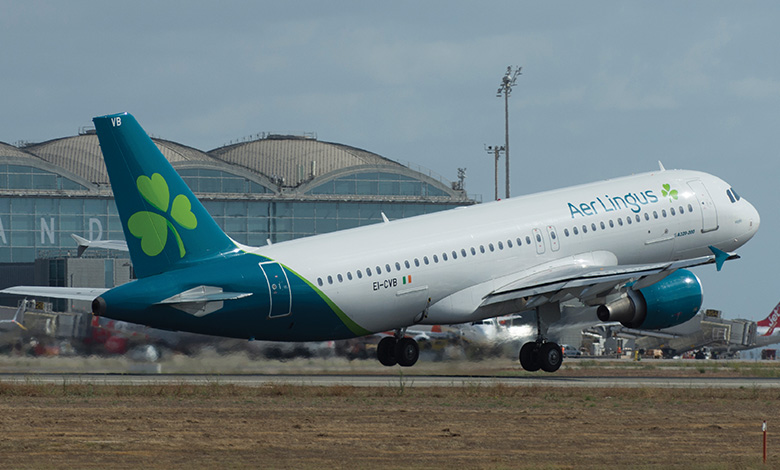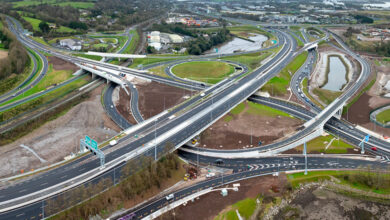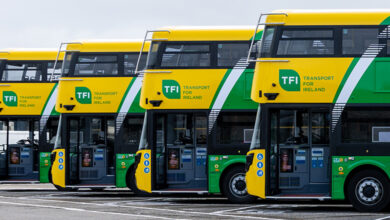REFuelEU: Highly ambitious long-term aviation sustainability targets

Sustainable aviation fuel (SAF) is still at an early stage of development, but between 2025 and 2050, airlines and governments will be legally obliged to ensure that it grows from 2 per cent of minimum share to 70 per cent, as outlined in the REFuelEU aviation initiative.
The main objective of the REFuelEU aviation initiative, as a key part of the EU’s Fit for 55 package, is to “increase both demand for and supply of sustainable aviation fuels (SAF), which have lower CO2 emissions than fossil fuel kerosene, while ensuring a level playing field across the EU air transport market”.
The new legislation aims to put air transport on the trajectory of the EU’s climate targets for 2030 and 2050, as SAF is well-established as one of the key short- and medium-term tools for decarbonising aviation. Currently, the rollout of SAF is being hindered by low supply and prices much higher than prices of fossil fuels.
The new regulation contains six main provisions:
1. aviation fuel suppliers must ensure that all fuel made available to aircraft operators at EU airports contains a minimum share of SAF from 2025 and, from 2030, a minimum share of synthetic fuels, with both shares increasing progressively until 2050. Fuel suppliers will have to incorporate 2 per cent SAF in 2025, 6 per cent in 2030 and 70 per cent in 2050. From 2030, 1.2 per cent of fuels must also be synthetic fuels, rising to 35 per cent in 2050;
2. aircraft operators must ensure that the yearly quantity of aviation fuel uplifted at a given EU airport is at least 90 per cent of the yearly aviation fuel required, to avoid tinkering practices which would bring additional emissions from extra weight;
3. the scope of eligible sustainable aviation fuels and synthetic aviation fuels includes certified biofuels, renewable fuels of non-biological origin (including renewable hydrogen) and recycled carbon aviation fuels complying with the Renewable Energy Directive (RED) sustainability and emissions saving criteria, up to a maximum of 70 per cent, with the exception of biofuels from food and feed crops, as well as low-carbon aviation fuels (including low-carbon hydrogen), which can be used to reach the minimum shares in the respective part of the regulation;
4. rules on the competent authorities, to be designated by the member states to enforce this regulation, and rules on fines;
5. The creation of an EU labelling scheme about environmental performance for aircraft operators using SAF, which will help consumers make informed choices and will promote greener flights; and
6. data collection and reporting obligations for fuel suppliers and aircraft operators enabling to monitor the effects of this regulation on the competitiveness of EU operators and platforms.
The REFuelEU aviation initiative is part of the Fit for 55 package. Presented by the European Commission on 14 July 2021, the package aims to enable the EU to reduce its net greenhouse gas emissions by at least 55 per cent by 2030 compared to 1990 levels and to achieve greenhouse gas emissions neutrality in 2050.
On 2 June 2022, the EU’s Transport, Telecommunications and Energy Council (TTE) reached a general approach to the proposal. Following interinstitutional negotiations between the European Council and the European Parliament (trilogues), the two co-legislators reached a provisional political agreement on the file on 25 April 2023.
Emissions from aviation
Policy actions and the efforts of industry have led to improvements in fuel efficiency over recent years. For instance, the amount of fuel burned per passenger dropped by 24 per cent between 2005 and 2017. However, these environmental benefits have been outpaced by a sustained growth in air traffic, with passengers in 2017 flying on average 60 per cent further than in 2005.
In the EU in 2019, direct emissions from aviation accounted for 3.8 per cent of total CO2 emissions. The aviation sector creates 13.9 per cent of emissions from transport, making it the second biggest source of transport GHG emissions after road transport. If global aviation were a country, it would rank in the top 10 emitters.
Someone flying from Lisbon to New York and back generates roughly the same level of emissions as the average person in the EU does by heating their home for a whole year.
Before the Covid-19 pandemic, the International Civil Aviation Organization (ICAO) forecasted that by 2050 international aviation emissions could triple compared with 2015.
Sustainable aviation fuel (SAF) is a greener jet fuel, the use of which seek to reduce the lifetime emissions of engine burn, acting as a drop-in fuel that can be blended in increasingly high proportions with conventional Jet A1. Widespread use of SAF has the potential to cut aviation’s greenhouse gas emissions by up to 80 per cent compared with traditional jet fuels.
November 2023 saw the first ever example of a transatlantic flight powered by SAF, as a Virgin Atlantic Boeing 787 Dreamliner successfully flew from London Heathrow to New York’s JFK Airport. On the flight, the plane was filled with 50 tonnes of SAF. Two types were used, with 88 per cent derived from waste fats and the rest from the wastes of corn production in the US.
Commercial viability remains a stumbling block for widespread use, but the fact that the technology is proven to be useable and theoretically commercially viable means that, in the long term, the scope for progress is significant.





